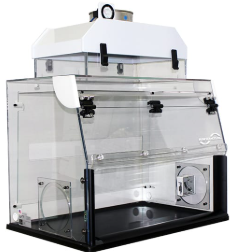If you’ve ever faced warping issues while 3D printing, you’re not alone. Warping is a common problem, especially when working with materials like ABS, PETG, and Nylon, which require consistent temperatures for proper adhesion. One of the most effective solutions? A 3D printer housing.
In this blog, we’ll explore why warping happens, how a 3D printer housing prevents it, and what to look for in the right enclosure.
Why Does Warping Occur in 3D Printing?
Warping happens when different parts of a print cool at different rates, causing stress that pulls the edges of the print upwards and away from the print bed. This issue is most common with materials that require higher temperatures, such as:
🔹 ABS – Highly prone to warping due to its high-temperature needs
🔹 PETG – Less likely than ABS but still benefits from a stable environment
🔹 Nylon – Requires consistent heat to avoid shrinkage and lifting
Factors that contribute to warping include:
✔️ Rapid Cooling – When layers cool too quickly, they shrink unevenly
✔️ Uneven Temperature – Drafts and temperature fluctuations increase stress on the print
✔️ Poor Bed Adhesion – If the first layer doesn’t adhere well, warping becomes more likely
How a 3D Printer Housing Prevents Warping
A 3D printer housing (or enclosure) creates a controlled printing environment, reducing the impact of external factors that cause warping. Here’s how it helps:
🔥 Maintains a Stable Temperature
A closed housing keeps the heat generated by the printer inside, preventing sudden cooling and ensuring uniform temperature distribution across the print. This is crucial for materials like ABS, which require a consistent ambient temperature of 45-60°C to avoid shrinkage.
💨 Blocks Drafts and Airflow
Even a small breeze from an open window, AC unit, or fan can cause uneven cooling. A housing acts as a physical barrier, shielding your print from sudden temperature drops.
🛠️ Improves First Layer Adhesion
Since warping often begins at the first few layers, a stable and warm print environment inside a housing helps improve adhesion to the print bed, reducing lifting and curling.
🌡️ Better Heat Management for High-Temp Prints
For materials that need high nozzle and bed temperatures, like ABS and Nylon, a housing traps heat inside, minimizing temperature fluctuations that can cause layer separation.
What to Look for in a 3D Printer Housing
If you’re considering an enclosure for your printer, here are some key features to look for:
✔️ Temperature Control – Ensures stable heat for consistent prints
✔️ Ventilation System – Helps manage fumes from materials like ABS
✔️ Fire-Resistant Materials – Enhances safety, especially for high-temperature printing
✔️ Noise Reduction – Lowers sound levels for quieter printing
✔️ Dust and Debris Protection – Keeps your printer and prints clean
Final Thoughts: Is a 3D Printer Housing Worth It?
If you frequently deal with warping, poor layer adhesion, or inconsistent prints, investing in a 3D printer housing is a game-changer. It provides better temperature stability, reduces drafts, and improves print quality—especially for high-temp filaments like ABS and PETG.
💡 Want to take your prints to the next level? Consider adding a high-quality enclosure to your 3D printing setup today! 🚀

